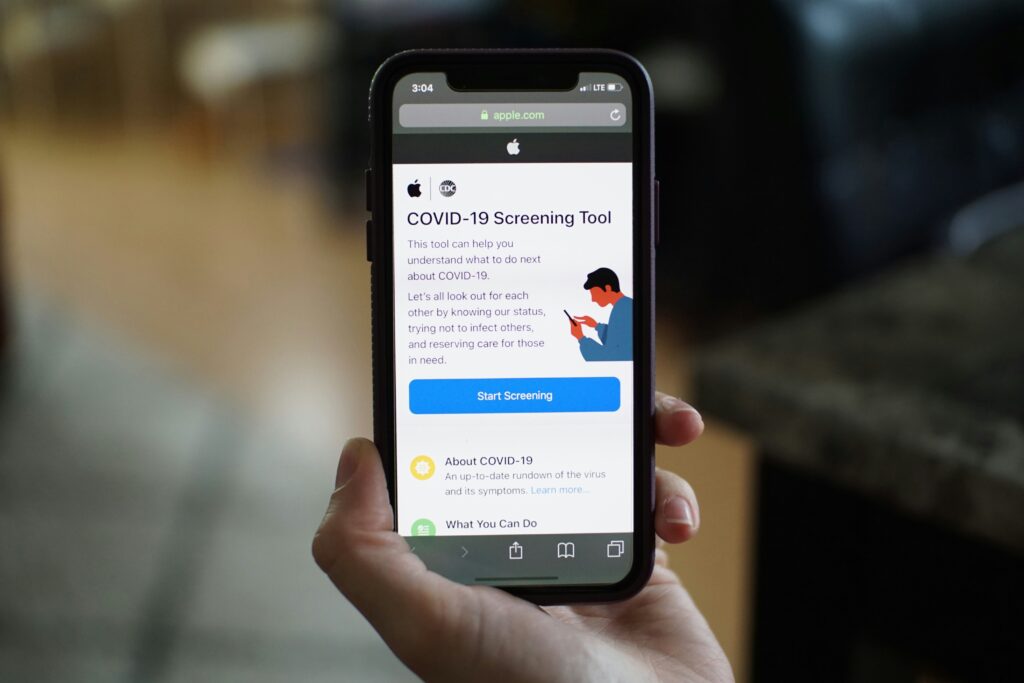Step into the future of healthcare as we delve deep into the rapidly evolving world of telemedicine and virtual doctor visits. In this era of digital transformation, healthcare has found a new frontier that is breaking geographical barriers and revolutionizing the way we receive medical assistance. Are you ready to embark on this virtual journey and explore how it can transform your health experience?

From the comfort of your home, you can now consult medical professionals, receive prescriptions, and monitor your health progress, all through the marvels of telemedicine. This insightful guide will unveil the key facets of virtual doctor visits, unraveling how technology is providing healthcare solutions at your fingertips. This is not just the future, but the present of healthcare, empowering patients with unprecedented control over their health management.
Through the subsequent sections, we will shed light on the benefits and challenges of telemedicine, the role of artificial intelligence in healthcare, and the impact of virtual doctor visits on the healthcare industry. Brace yourself to discover the incredible ways telemedicine is shaping our lives and bringing quality healthcare within reach. So sit back, as we take you through this exciting voyage into the future of healthcare.
Understanding Telemedicine and Virtual Doctor Visits
The landscape of healthcare is undergoing a digital transformation, and at the forefront of this evolution is telemedicine—a modern approach that enables medical consultations and services to be delivered remotely through technology. What was once a novelty has now become a mainstream option, especially in the wake of global health challenges that accelerated the adoption of virtual care.
Telemedicine refers to a wide range of clinical services provided remotely via digital communication tools such as video conferencing, secure messaging, phone consultations, and mobile health apps. This model removes traditional barriers to healthcare, such as geographic limitations, transportation issues, and long wait times—offering greater flexibility, efficiency, and access for patients and providers alike.
How Does Telemedicine Work?
At its core, telemedicine uses telecommunications technologies to replicate the experience of a traditional doctor’s visit, without requiring the patient to be physically present in a clinic or hospital. The process is simple, secure, and patient-friendly.
Key Steps in a Telemedicine Appointment:
- Appointment Scheduling: Patients typically use a web portal, app, or health system website to schedule a virtual consultation—much like booking an in-person visit.
- Pre-Visit Instructions: Depending on the platform, patients may be asked to complete a brief health questionnaire, upload relevant documents, or provide medical history before the session.
- The Virtual Consultation: On the scheduled date, the patient connects with their healthcare provider through a secure video call, telephone, or chat interface. High-resolution video and audio ensure effective two-way communication.
- Diagnosis and Recommendations: The doctor evaluates symptoms, discusses the patient’s concerns, and may prescribe medication, recommend lab tests, or advise on follow-up care—just as they would in person.
- Documentation and Prescriptions: After the consultation, patients receive a summary of the visit and any necessary prescriptions or instructions via the platform or by email.
Privacy and Security Considerations
One of the most important aspects of virtual healthcare is maintaining patient confidentiality and data security. Telemedicine platforms are required to comply with national and regional health information privacy laws—such as HIPAA (Health Insurance Portability and Accountability Act) in the U.S.—to safeguard sensitive medical records and communication.
Security Features Typically Include:
- End-to-end encryption of video calls and messages
- Secure login credentials and two-factor authentication
- Confidential data storage within protected health information (PHI) databases
- Compliance certifications that demonstrate adherence to privacy regulations
These measures ensure that virtual consultations remain private, secure, and professional, building trust between patients and providers.
Exploring the Benefits of Telemedicine
Virtual doctor visits offer several advantages over traditional healthcare delivery models. These include:
- Accessibility: Telemedicine provides medical care to individuals who might otherwise struggle to access it. This includes those in rural areas, the elderly, or those with mobility challenges.
- Convenience: Virtual visits eliminate travel time and waiting room delays, making healthcare more convenient for both patients and providers.
- Cost savings: Telemedicine can reduce healthcare costs by eliminating travel expenses and minimizing time off work.
- Continuity of care: Telemedicine enables regular follow-ups, improving the continuity of care and making disease management more efficient.
Telemedicine in Chronic Disease Management
Telemedicine is particularly beneficial in the management of chronic diseases such as diabetes and heart disease. Regular monitoring and consistent communication with healthcare providers can significantly improve health outcomes in these cases. For instance, a patient can record daily blood sugar levels and share them with the doctor via a telemedicine platform. The doctor can then analyze the data and adjust the treatment plan accordingly.
Challenges and Considerations in Telemedicine

Despite its benefits, telemedicine has its challenges and considerations. One of the primary concerns is the lack of physical examination, which may limit the doctor’s ability to diagnose or treat certain conditions. Furthermore, technical issues such as unstable internet connections or system glitches could hinder the effectiveness of virtual visits.
Patient privacy is another crucial aspect. Telemedicine platforms must adhere to strict security standards to safeguard sensitive health information. In addition, not all patients are comfortable with technology, so training and support may be necessary to help them navigate the digital platforms.
Addressing the Digital Divide
The digital divide – the gap between those who have access to technology and those who do not – is a significant barrier to telemedicine. To address this issue, healthcare providers and policymakers must collaborate to ensure that everyone has access to reliable, high-speed internet. This could involve investing in digital infrastructure in underserved areas or subsidizing internet costs for low-income populations.
The Future of Telemedicine
Telemedicine is no longer a futuristic concept—it is rapidly becoming a cornerstone of modern healthcare delivery. As technology evolves, so too does the potential of telemedicine to transform patient care, enhance clinical efficiency, and expand access across geographic, economic, and physical boundaries. The healthcare industry is on the brink of a digital revolution, and telemedicine is leading the charge.
The COVID-19 pandemic accelerated the global adoption of virtual care by necessity, demonstrating its ability to maintain continuity of care while minimizing exposure to infection. However, beyond emergency responses, telemedicine is now recognized as a long-term solution with profound implications for how care is delivered, monitored, and personalized.
Emerging Innovations in Telemedicine
As we look to the future, several exciting advancements are poised to reshape telehealth even further:
1. Remote Patient Monitoring (RPM)
Devices such as smartwatches, glucose monitors, and blood pressure cuffs allow providers to track patients’ health metrics in real-time, facilitating proactive management of chronic conditions and reducing hospital readmissions.
2. Integration with Electronic Health Records (EHRs)
Seamless data exchange between telemedicine platforms and EHR systems enables holistic, real-time views of patient health, improving decision-making and care coordination.
3. Virtual Health Ecosystems
From virtual physical therapy sessions to mental health support apps and chronic disease management platforms, patients will soon access comprehensive care ecosystems—all from the comfort of their home.
Telemedicine and Artificial Intelligence (AI)
A major driver of the next wave in telemedicine is Artificial Intelligence (AI). With its ability to process massive datasets, detect subtle trends, and generate predictive insights, AI is poised to dramatically enhance the efficiency, accuracy, and personalization of virtual care.
Applications of AI in Telehealth:
- 🧠 Medical Imaging Analysis: AI can interpret X-rays, MRIs, and CT scans with high precision, assisting clinicians in detecting anomalies and forming faster, more accurate diagnoses.
- 📈 Predictive Analytics: By examining patterns in patient data, AI can forecast disease progression or flag early warning signs, allowing for early intervention.
- 🧬 Personalized Treatment Plans: AI systems can incorporate genetic, lifestyle, and clinical data to suggest customized therapies tailored to each individual’s biology and health history.
- 🤖 Chatbots and Virtual Assistants: These tools can handle basic queries, schedule appointments, and triage symptoms—freeing up healthcare professionals to focus on more complex cases.
AI’s integration into telemedicine platforms ensures that virtual healthcare doesn’t just match in-person visits—it enhances them.
A Healthcare Transformation in Motion
Telemedicine is not a temporary workaround, but a lasting evolution of how we understand and deliver care. As broadband internet becomes more widespread and mobile technology more advanced, telehealth will become an essential part of mainstream healthcare infrastructure.
However, for this vision to be fully realized, key challenges must be addressed:
Maintaining human-centered care in digital environments.
Ensuring equitable access across rural and underserved communities.
Strengthening data privacy and cybersecurity protocols.
Providing training and support for both providers and patients.
In conclusion, telemedicine represents a monumental shift in healthcare—offering a glimpse into a future where care is smarter, more accessible, and deeply personalized. With continued innovation and thoughtful implementation, it promises to reshape not only how we receive medical attention but how we experience health itself.
Telemedicine represents one of the most significant advancements in modern healthcare, bridging the gap between patients and providers through technology. What began as a complementary option for medical consultations has rapidly evolved into a primary mode of care for millions, especially in response to global challenges such as the COVID-19 pandemic. Its ability to provide convenient, cost-effective, and timely access to healthcare—regardless of geographic location—has redefined the way we think about medical service delivery.
The operational model of telemedicine is relatively straightforward but immensely powerful. By using secure communication platforms—whether through video calls, mobile apps, or online messaging—patients can consult with healthcare providers from virtually anywhere. These platforms are not only designed for ease of use but also adhere to strict privacy and security standards, ensuring that patient data remains confidential and protected under regulations like HIPAA.
What sets telemedicine apart is its potential to expand even further through the integration of cutting-edge technologies. Remote patient monitoring, for instance, empowers providers to track chronic conditions in real time, enabling earlier interventions and better long-term outcomes. Similarly, artificial intelligence (AI) is transforming the telehealth landscape by analyzing massive amounts of patient data, aiding in diagnostics, and personalizing treatment plans. AI can interpret medical images, flag anomalies, and predict disease progression with increasing accuracy—offering doctors valuable tools to enhance decision-making and patient care.
Looking forward, the future of telemedicine is bright and brimming with possibilities. As digital literacy improves and internet infrastructure expands globally, the barriers to accessing virtual care will continue to shrink. Virtual care ecosystems, smart home devices, and AI-driven tools will become standard components of healthcare delivery, shifting the focus from reactive treatment to proactive, preventive, and personalized care.
However, as we embrace this new era, it is crucial to address challenges such as digital inequality, regulatory limitations, and the need for continuous provider training. To unlock the full potential of telemedicine, a collaborative effort is required—from healthcare professionals, technology developers, policymakers, and patients alike.
Ultimately, telemedicine is not just a fleeting trend or an emergency solution. It is a transformative force reshaping the very fabric of healthcare. By leveraging innovation while staying rooted in patient-centered care, telemedicine has the power to deliver a future that is more accessible, efficient, and equitable for all.
Conclusion
In conclusion, the future of healthcare is being revolutionized through telemedicine and virtual doctor visits, reshaping the way we perceive and access medical care. This innovative approach provides convenience, cost-effectiveness, and efficiency, breaking down geographical barriers and making healthcare accessible to all, irrespective of location.
Telemedicine has proven to be a game-changer, particularly during challenging times such as the COVID-19 pandemic, ensuring continuous patient care while minimizing the risk of exposure. The integration of advanced technology in healthcare delivery is set to continue, promising exciting developments in the future.
However, the success of telemedicine hinges on addressing challenges like data security, patient privacy, and adapting to this new mode of healthcare. Fostering trust among patients and ensuring equal access to technology are critical for widespread adoption.
With the continued investment in digital health platforms, the future of healthcare looks bright, redefining patient experience and promising better health outcomes. Embrace the future of healthcare, explore telemedicine and experience the convenience of virtual doctor visits.
Remember, the future is not something we enter, it’s something we create. Let’s shape a future where healthcare is accessible, affordable, and reliable for all, with telemedicine leading the way. 🌐👨⚕️💻👩⚕️🌐



